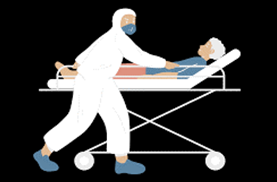News & Updates

Understanding Full Code vs. DNR: Navigating End-of-Life Care Decisions
Making decisions about end-of-life care can be one of the most challenging and emotionally charged experiences for individuals, families, and healthcare professionals. Two key terms that often arise in discussions about end-of-life care are “Full Code” and “DNR” (Do Not Resuscitate). In this blog post, we delve into the differences between Full Code and DNR orders, explore their implications for medical care and decision-making, and provide insights to help navigate these critical considerations with clarity, compassion, and informed decision-making.
Full Code: A Full Code order indicates that a patient wishes to receive all available medical interventions, including cardiopulmonary resuscitation (CPR), intubation, mechanical ventilation, and other life-saving measures in the event of cardiac or respiratory arrest. A Full Code status means that healthcare providers will make every effort to revive and sustain the patient’s life through aggressive medical interventions.
DNR (Do Not Resuscitate): In contrast, a DNR order signifies that a patient does not wish to receive CPR or other resuscitative measures in the event of cardiac or respiratory arrest. By opting for a DNR status, a patient indicates their preference for a natural dying process without aggressive medical interventions aimed at sustaining life artificially. It’s important to note that a DNR order does not mean withholding all medical care or comfort measures; it specifically pertains to resuscitative efforts in the event of cardiac or respiratory arrest.
Navigating End-of-Life Care Decisions:
When considering Full Code versus DNR orders, it’s essential for individuals, families, and healthcare providers to engage in open, honest, and compassionate discussions about the patient’s values, preferences, and goals of care. Here are some key points to consider when making end-of-life care decisions:
1. Communication and Advance Care Planning: Initiating conversations about end-of-life care preferences early on, documenting wishes through advance directives or living wills, and appointing a healthcare proxy or medical power of attorney can help ensure that your healthcare decisions align with your values and wishes.
2. Shared Decision-Making: Involving patients, families, and healthcare providers in shared decision-making processes fosters collaboration, mutual understanding, and respect for the patient’s autonomy. Healthcare professionals can provide guidance, support, and information to help individuals make informed choices about Full Code or DNR status.
3. Respect for Patient Autonomy: Respecting the patient’s autonomy and honoring their wishes regarding end-of-life care are foundational principles of ethical and compassionate care. Healthcare providers should advocate for the patient’s autonomy and ensure that their preferences for Full Code or DNR status are clearly documented and followed in care planning.
4. Compassionate Care and Support: Regardless of the decision to pursue Full Code or DNR status, it’s essential to provide compassionate, patient-centered care that focuses on comfort, dignity, and quality of life. Hospice care, palliative care, and supportive services can offer physical, emotional, and spiritual support to patients and families facing end-of-life challenges.
Navigating the complexities of end-of-life care decisions, including the choice between Full Code and DNR orders, requires sensitivity, communication, and a patient-centered approach that honors the individual’s values and wishes. By engaging in open discussions, documenting preferences, involving all stakeholders in decision-making, and providing compassionate care and support, individuals and families can make informed choices that align with their beliefs and goals of care. As we strive to navigate the journey of end-of-life care with empathy and understanding, let us approach these critical decisions with compassion, respect, and dignity, honoring the diverse values and choices that shape the landscape of palliative and hospice care.
